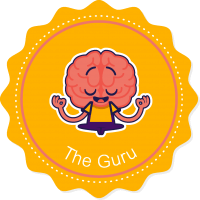SEMH stands for social, emotional, and mental health. Research suggests that one in six children, aged five to 16, are likely to have a mental health problem – that’s around five children in each class. Feeling confident in supporting SEMH needs is an important priority for everyone who works with children.
What is SEMH?
Essentially, social and emotional skills are about our ability to regulate our thoughts, emotions, and behaviours.
- Social skills – how we relate to others – using skills such as cooperation, compassion, collaboration, tolerance, respect, empathy, and trust.
- Emotional skills – how we relate to ourselves, using skills such as perseverance, self control, emotional stability, curiosity, motivation, resilience, responsibility, and conscientiousness.
Our mental health is our emotional, psychological, and social wellbeing. It affects how you think, feel, and act throughout your life, and it has a direct impact on your overall health.
The three are interrelated, intrinsically intertwined.
SEMH is a term that was introduced in the Special Educational Needs and Disability (SEND) Code of Practice 2015 to categorise one of the four broad areas of need. This replaced earlier categorisations, such as BESD (Behaviour, Emotional, Social Difficulties), which placed a strong emphasis on behaviour.
The term SEMH asks professionals to focus on the needs behind the behaviour, rather than the behaviour itself. The inclusion of the term mental health places great significance on the importance of prioritising children’s mental health, and wellbeing.
SEMH needs may be genetic, be related to attachment issues, or they may develop in response to stressful situations, including experiencing trauma or adversity in childhood. If children are not supported effectively, they may go on to develop a long-term, diagnosable SEMH condition.
Each child is unique and so the roots of the issues, the ways in which their difficulties present, and the support that they will require, will be individual to them.
However, certain individuals and groups are more at risk of developing SEMH difficulties. These risk factors include:
- Having a diagnosable SEND condition, such as Attention Deficit Hyperactivity Disorder (ADHD) or autism.
- Having an attachment disorder.
- Having a medically unexplained condition, such as an unmet communication need.
- Having a sensory difficulty, which may not have been addressed.
- Experiencing early-life trauma, such as abuse, neglect, severe bullying, parental separation, or the death of a loved one.
Research also shows that LGBTQ+ young people are three times more likely to self-harm and twice as likely to have depression, anxiety, and panic attacks, as well as to be lonely and worry about their mental health on a daily basis.
Potential SEMH Symptoms and Signs
Some children will have their SEMH needs identified at an early age, whilst others’ needs may not be detected until they reach a group setting, or later still.
Children’s feelings of fear, frustration, anger, anxiety, isolation, and sadness may manifest in a variety of behaviours, from aggressive outbursts to a lack of concentration. It is often these externalising behaviours that first indicate a need.
Monitoring behaviour carefully can help us to identify those children whose SEMH needs are affecting their daily lives. It is vital to provide early support and intervention to help prevent difficulties from escalating.
As someone who works closely with children, you will be well-placed to identify early signs of a possible SEMH issue arising (especially if there is a notable change in behaviour). Children may display passive or active behaviours, alerting you to a potential difficulty.
Passive Behaviours may include.
- Anxiety and/or depression.
- Low mood.
- Low self-worth or being withdrawn.
- Lethargy.
- Being forgetful.
- Difficulty accepting praise.
- Difficulty engaging or focusing, and often daydreaming.
- Difficulty maintaining friendships.
Active behaviours may include:
- Restlessness.
- Mood swings.
- Verbal or physical aggression.
- Reactive and/or impulsive behaviours.
- Poor attendance.
- Lack of awareness of personal space.
- Difficulty showing empathy.
- Eating disorders, self-harm, and substance abuse.

